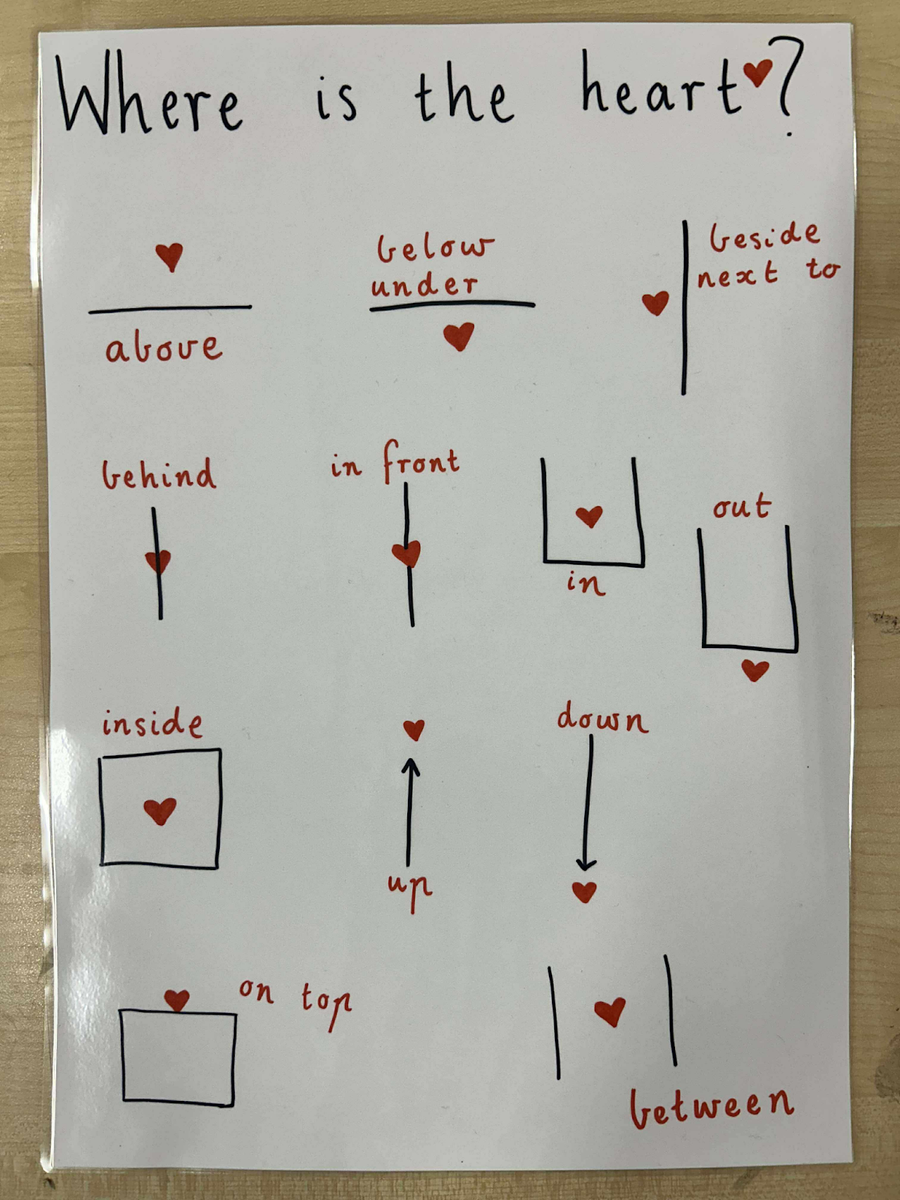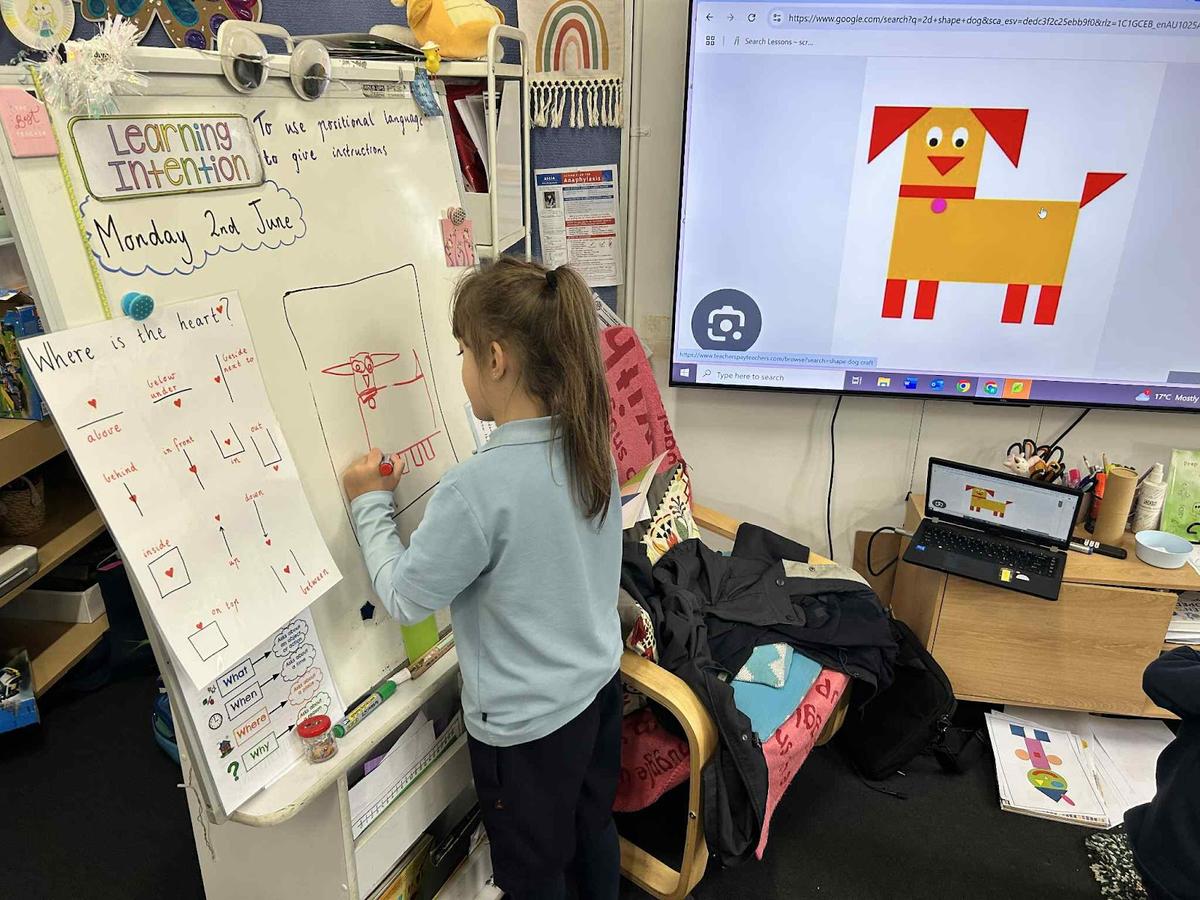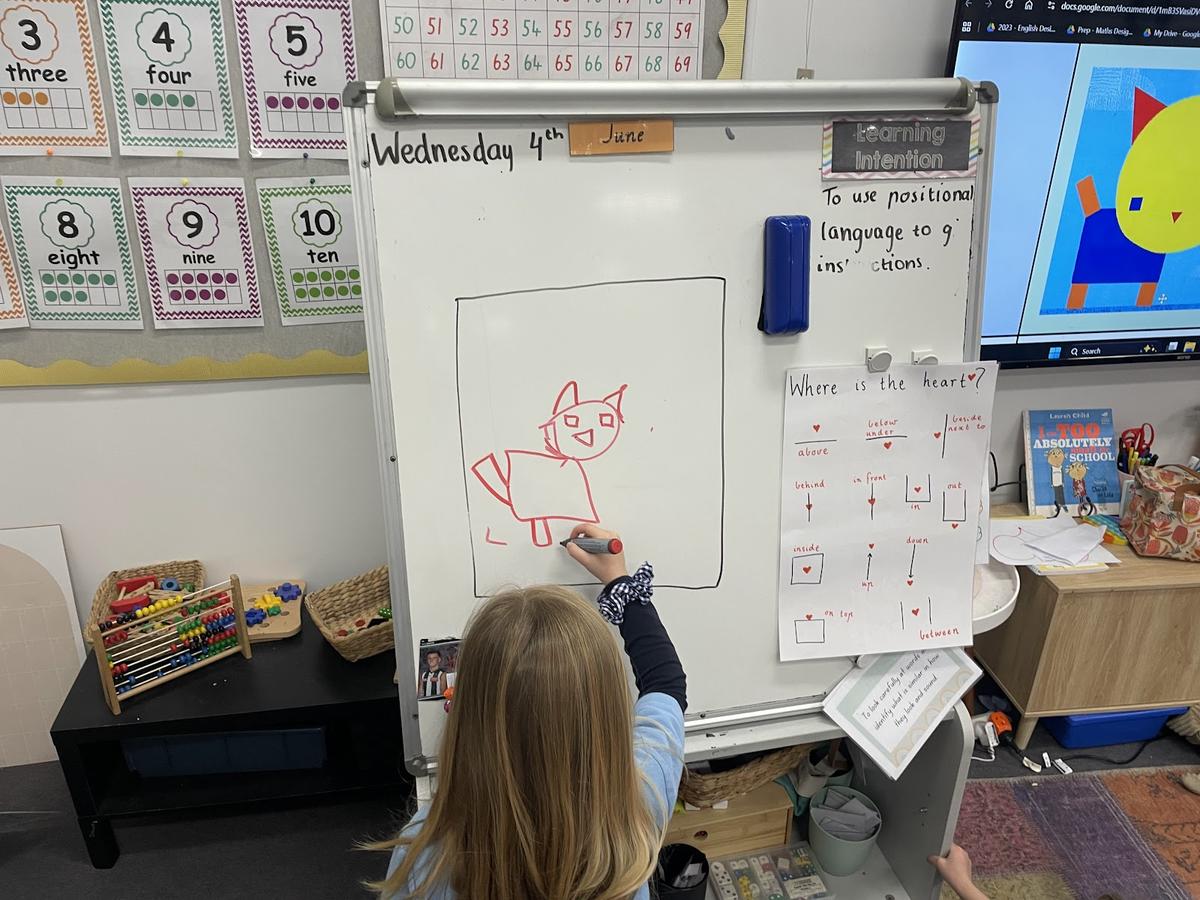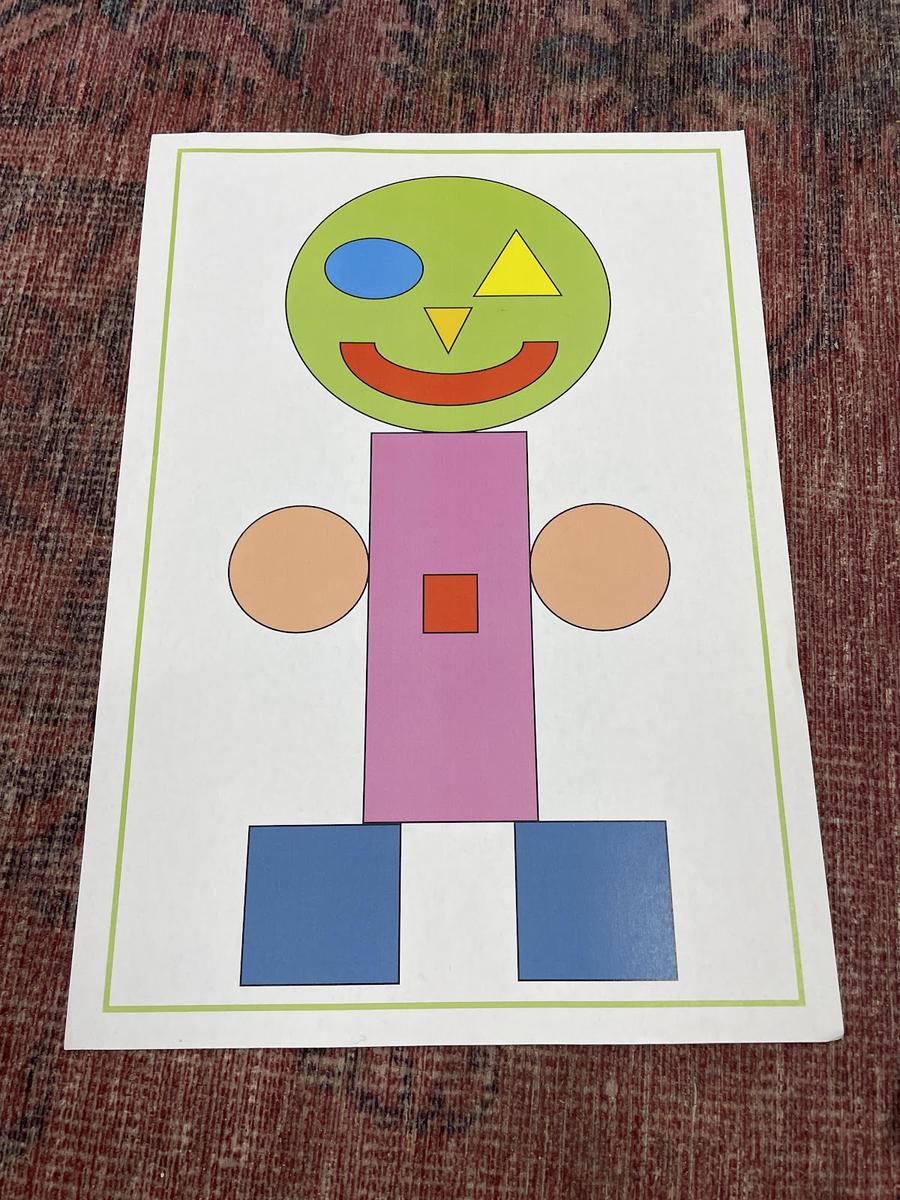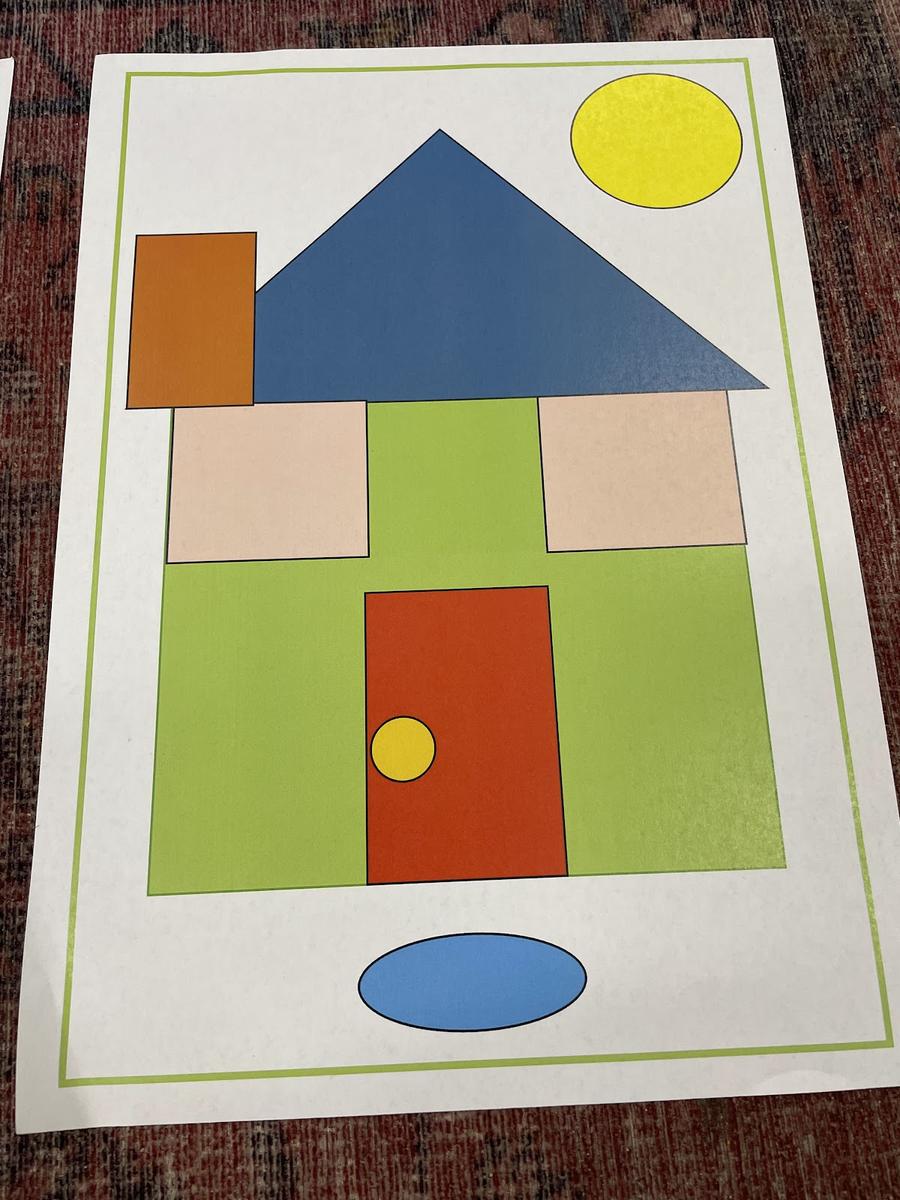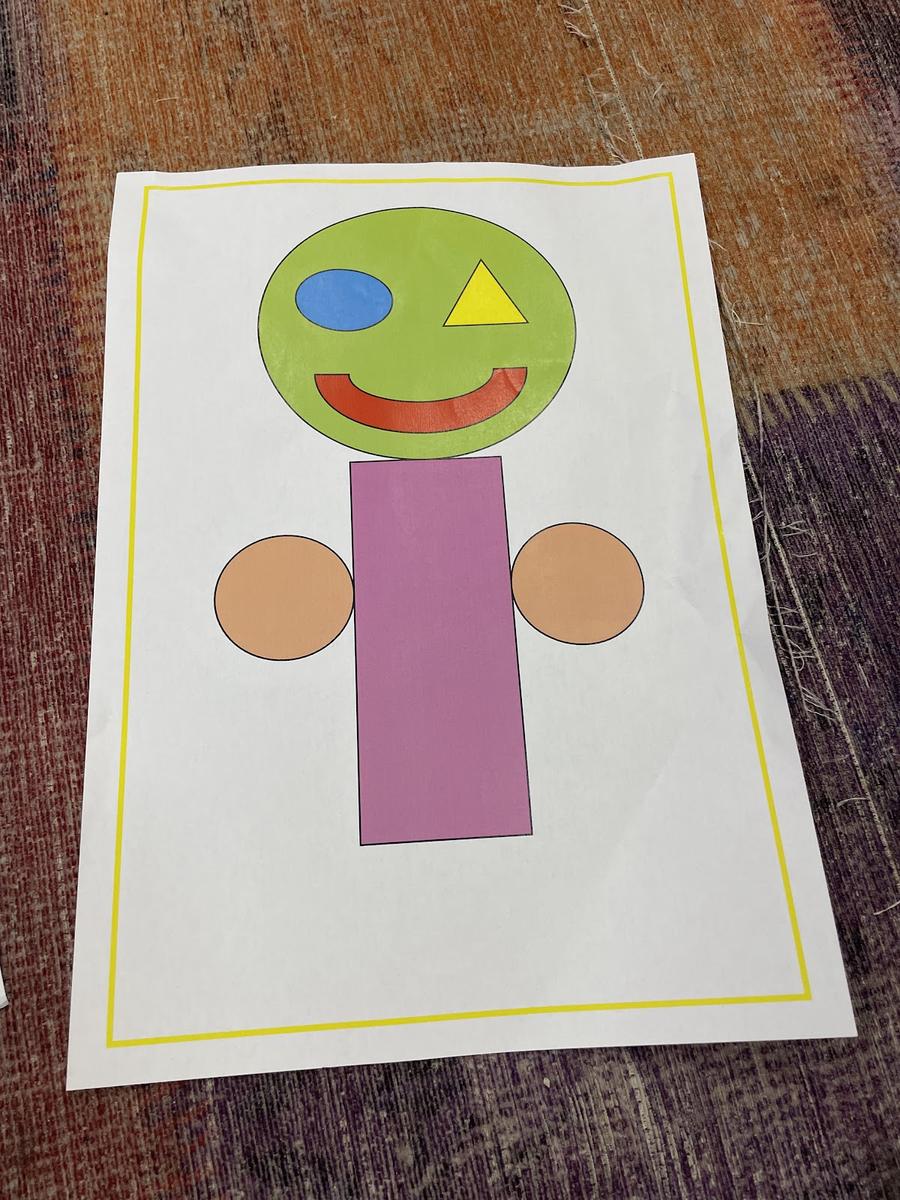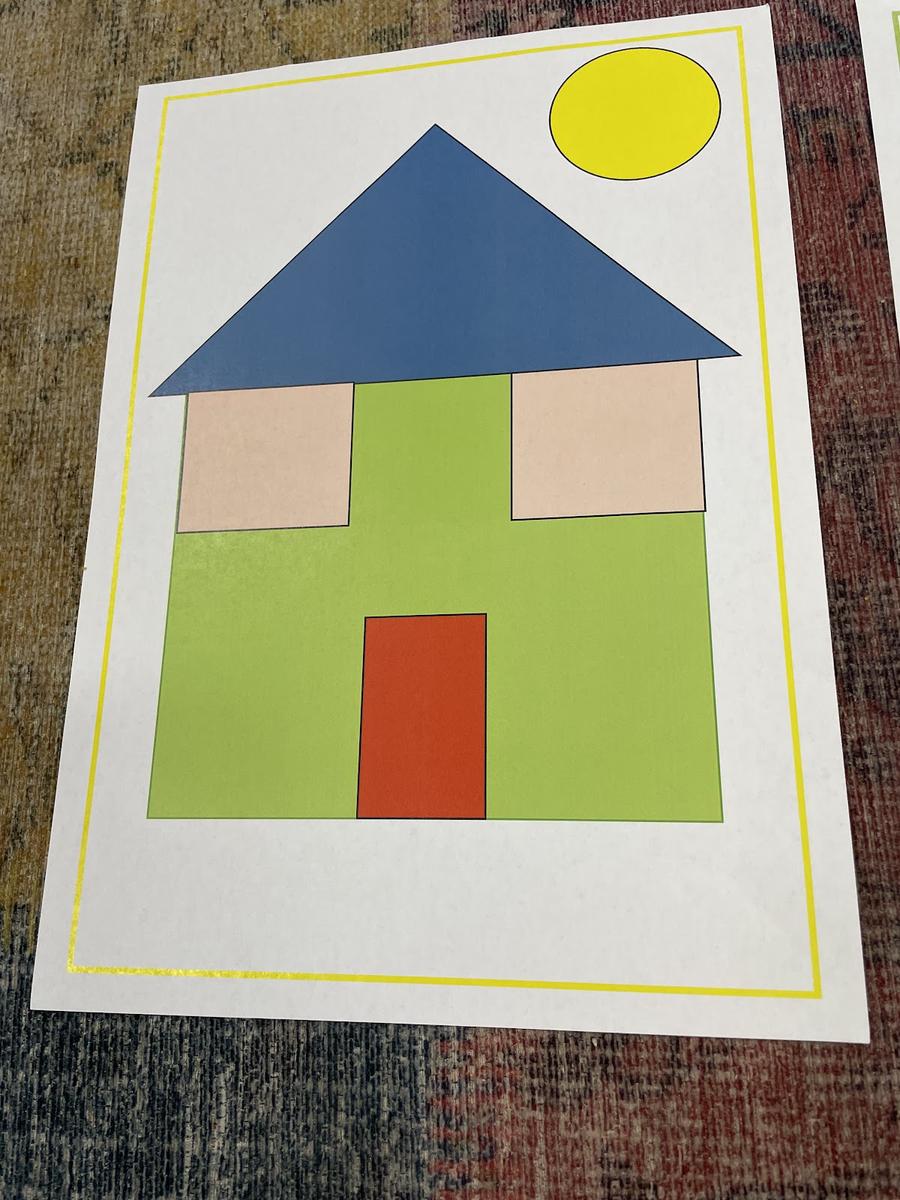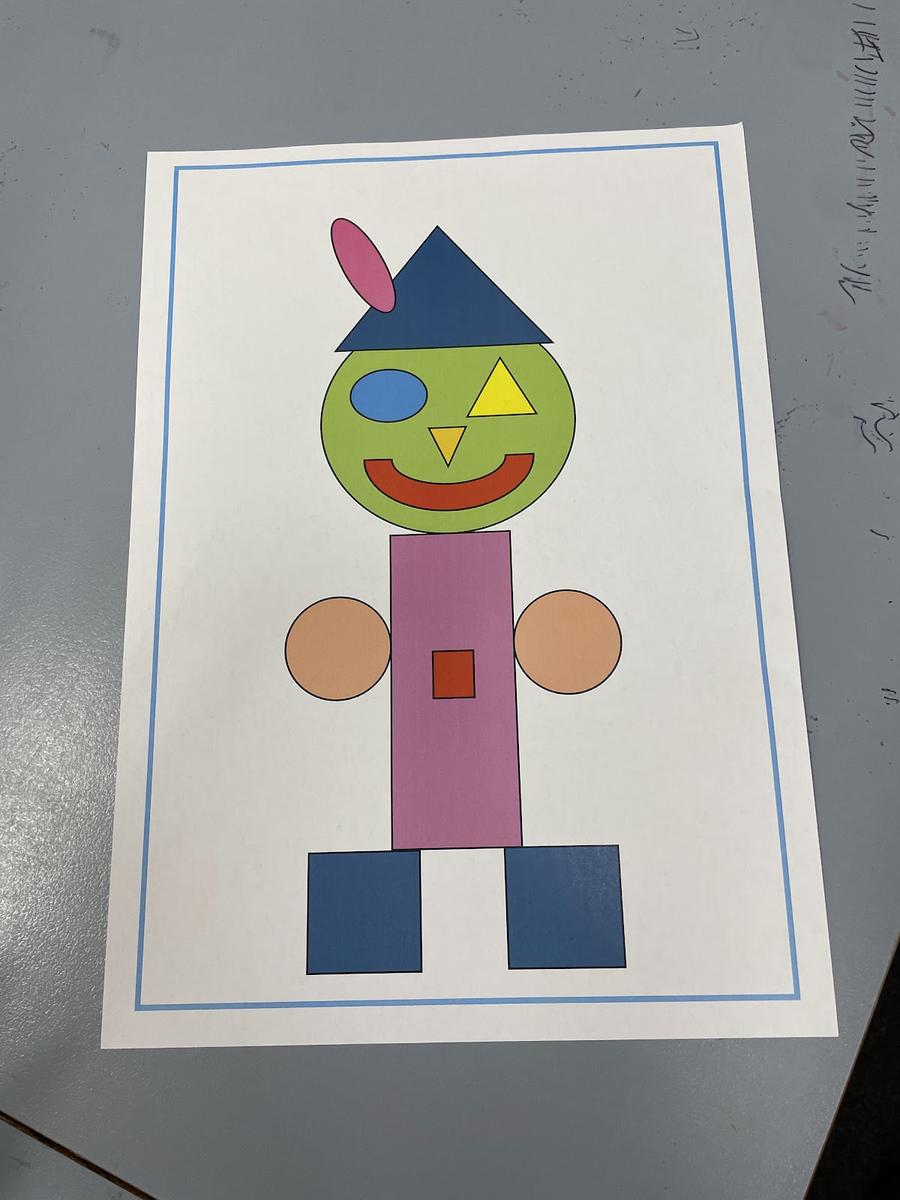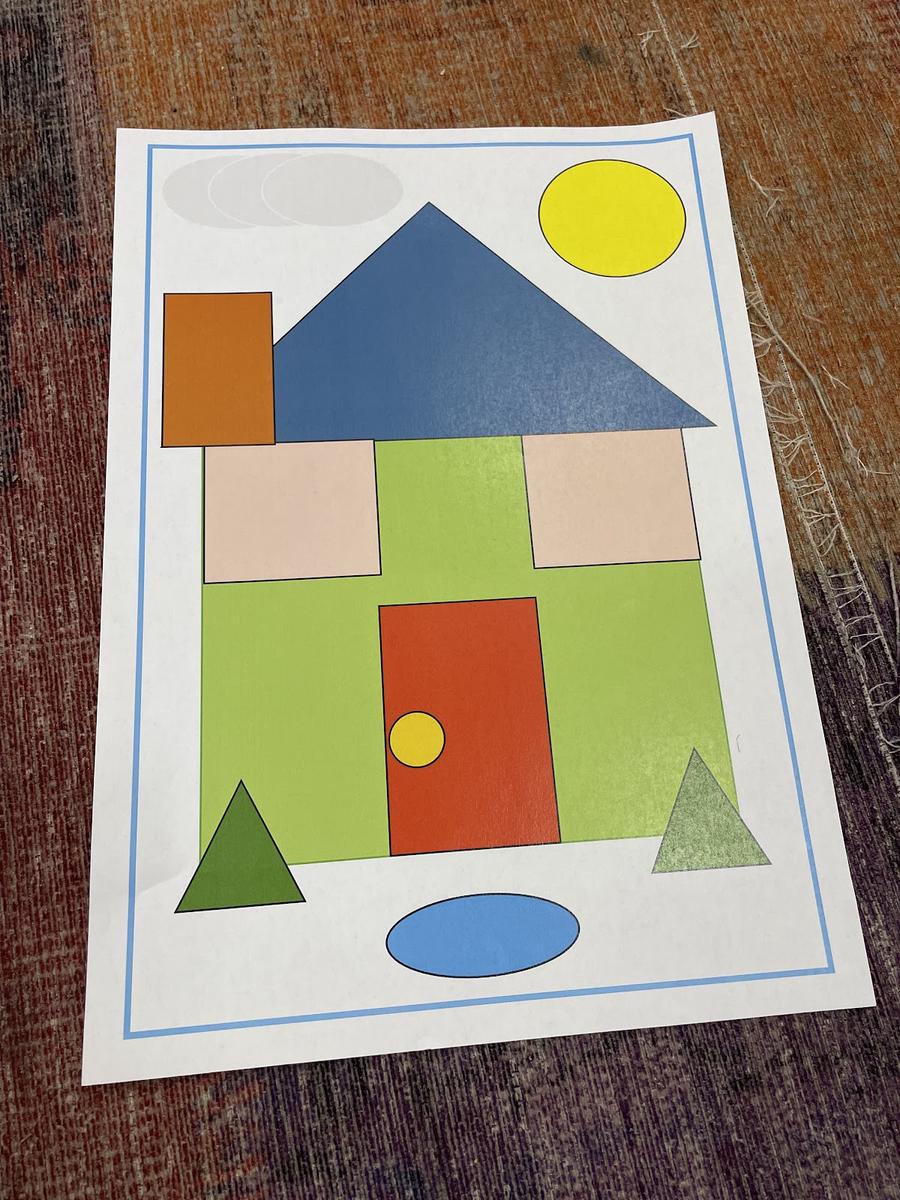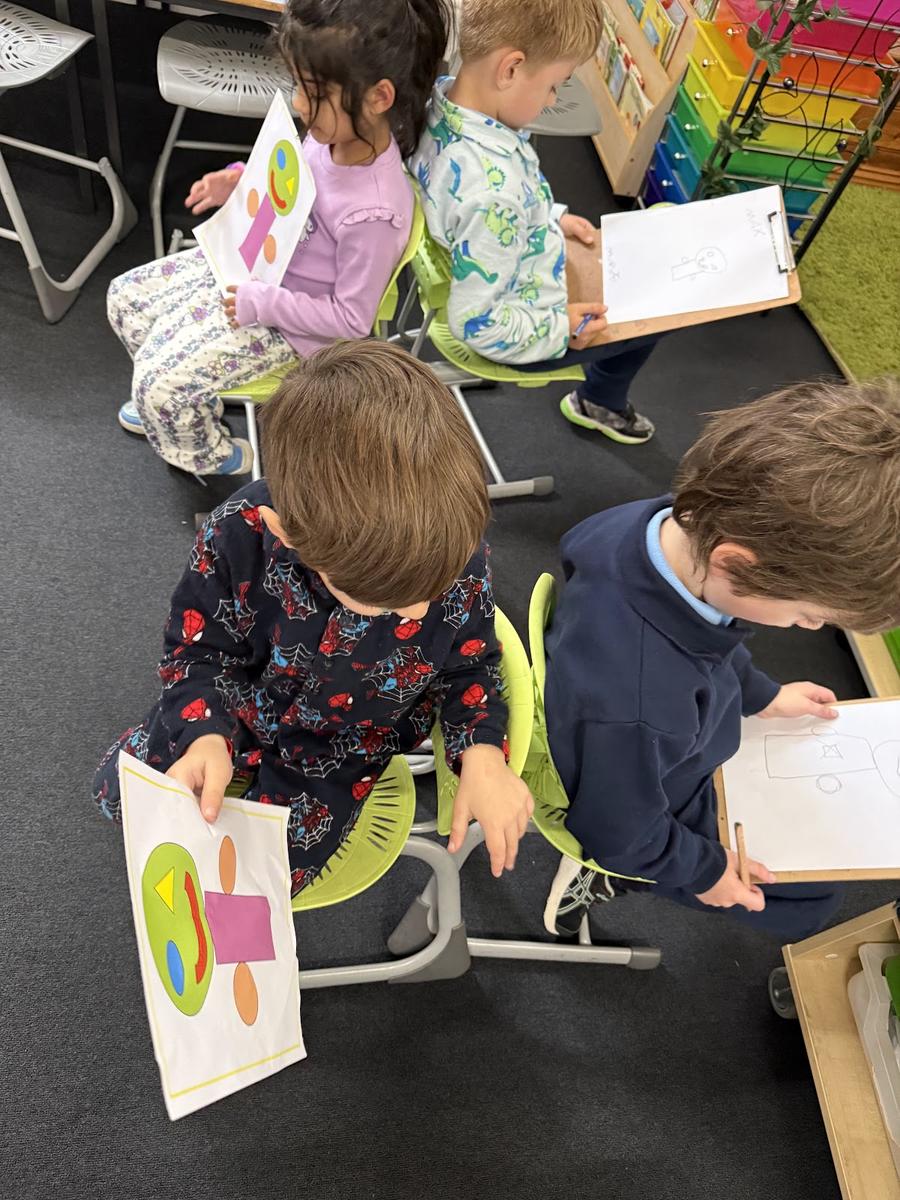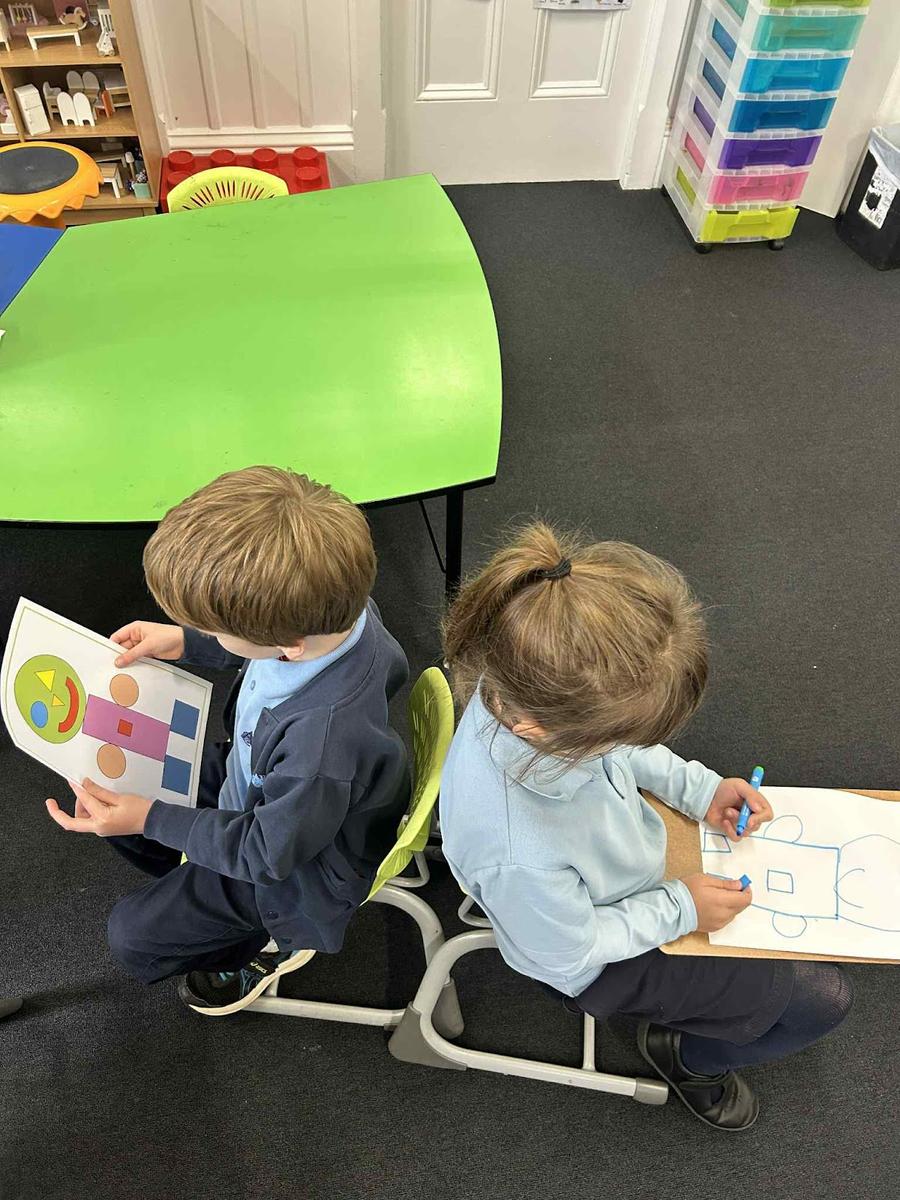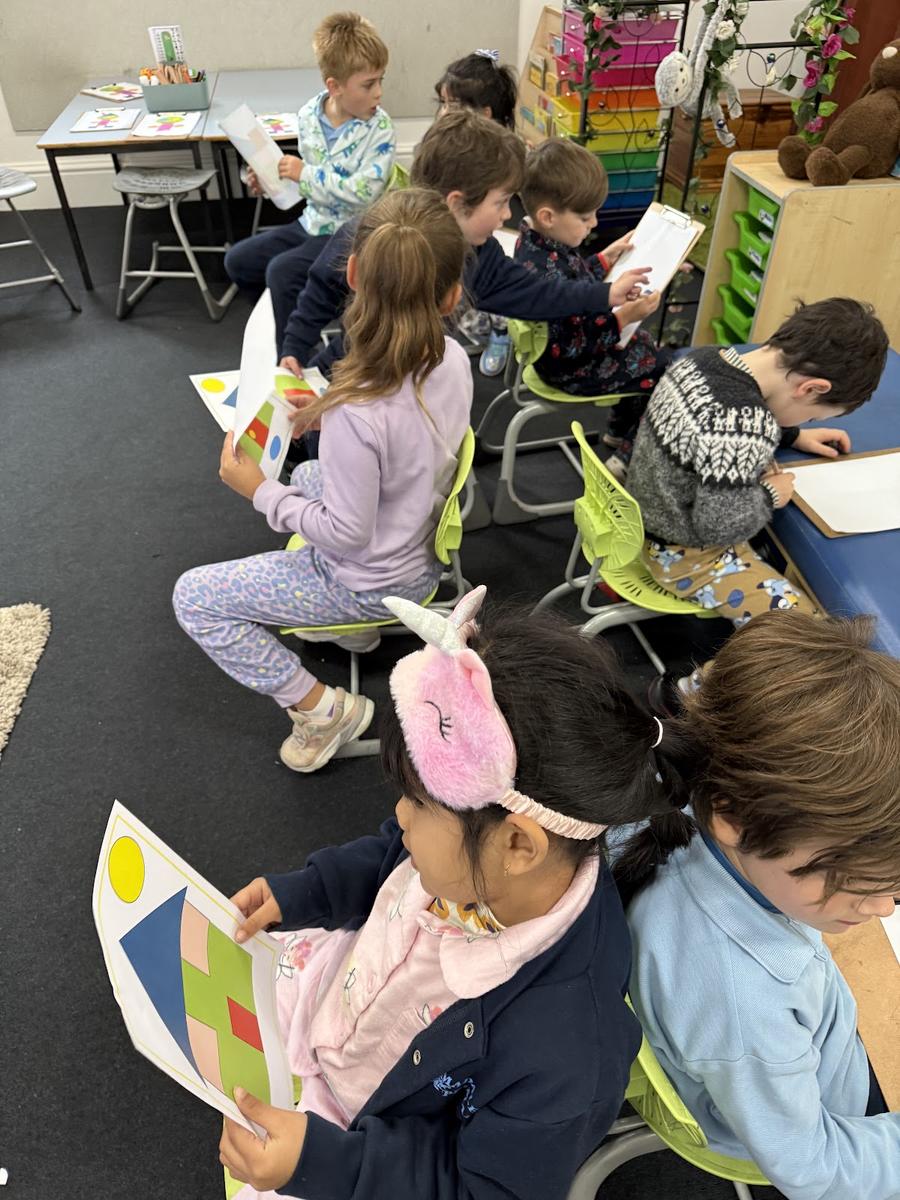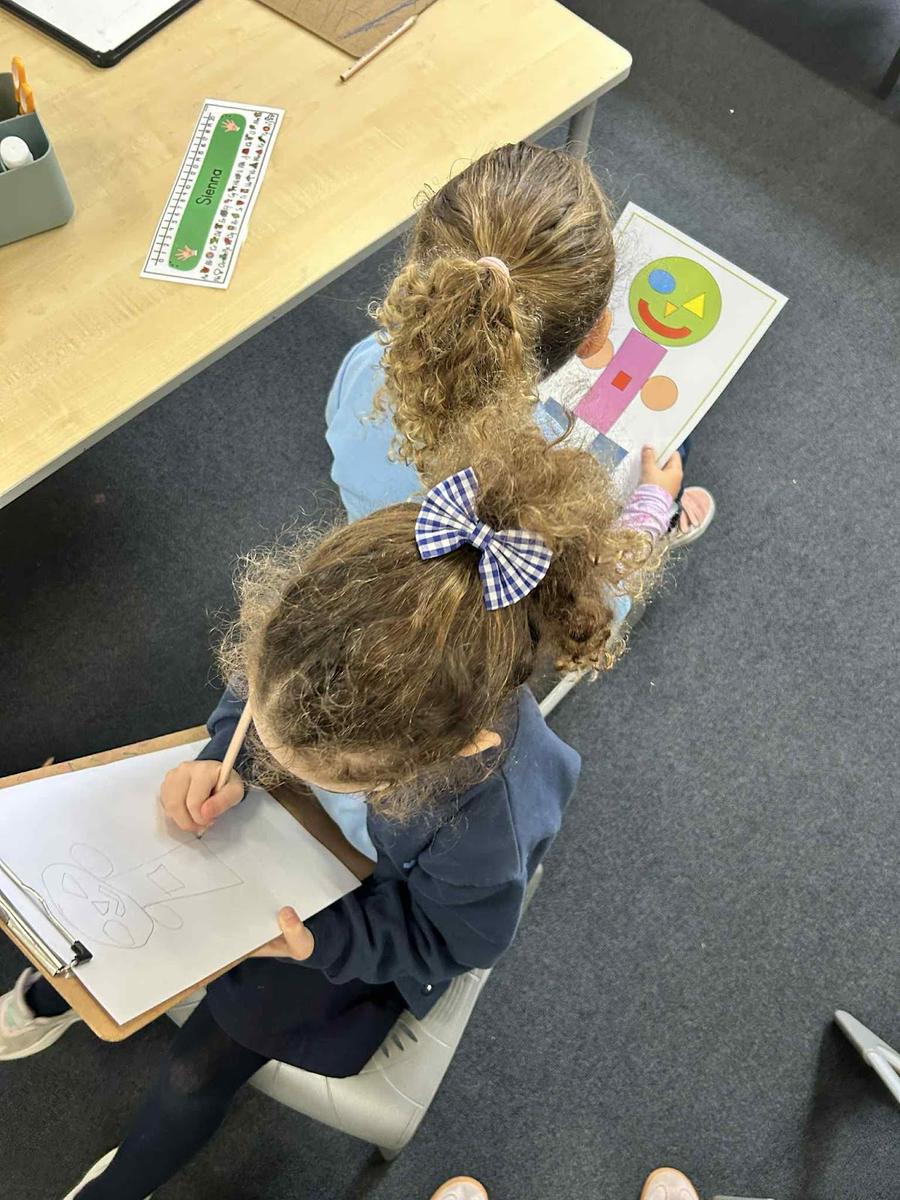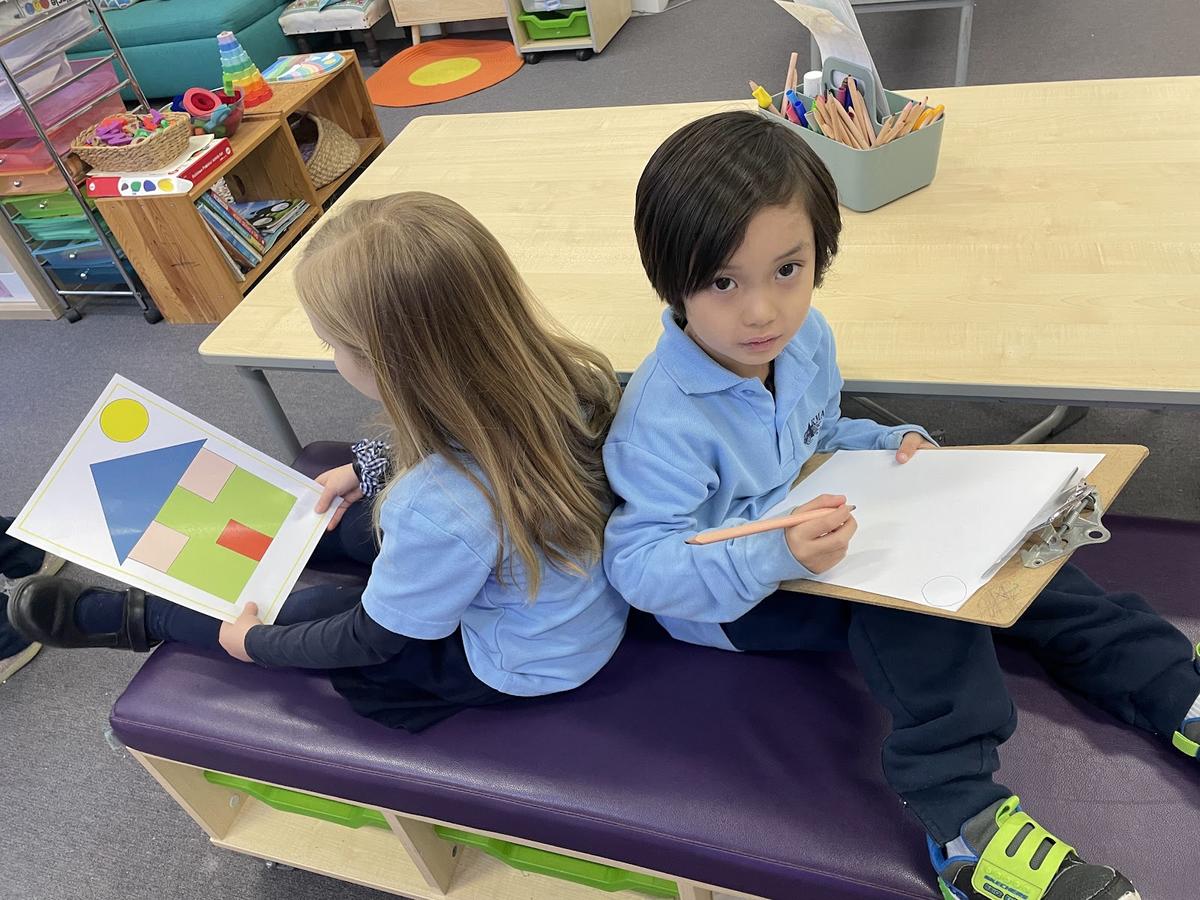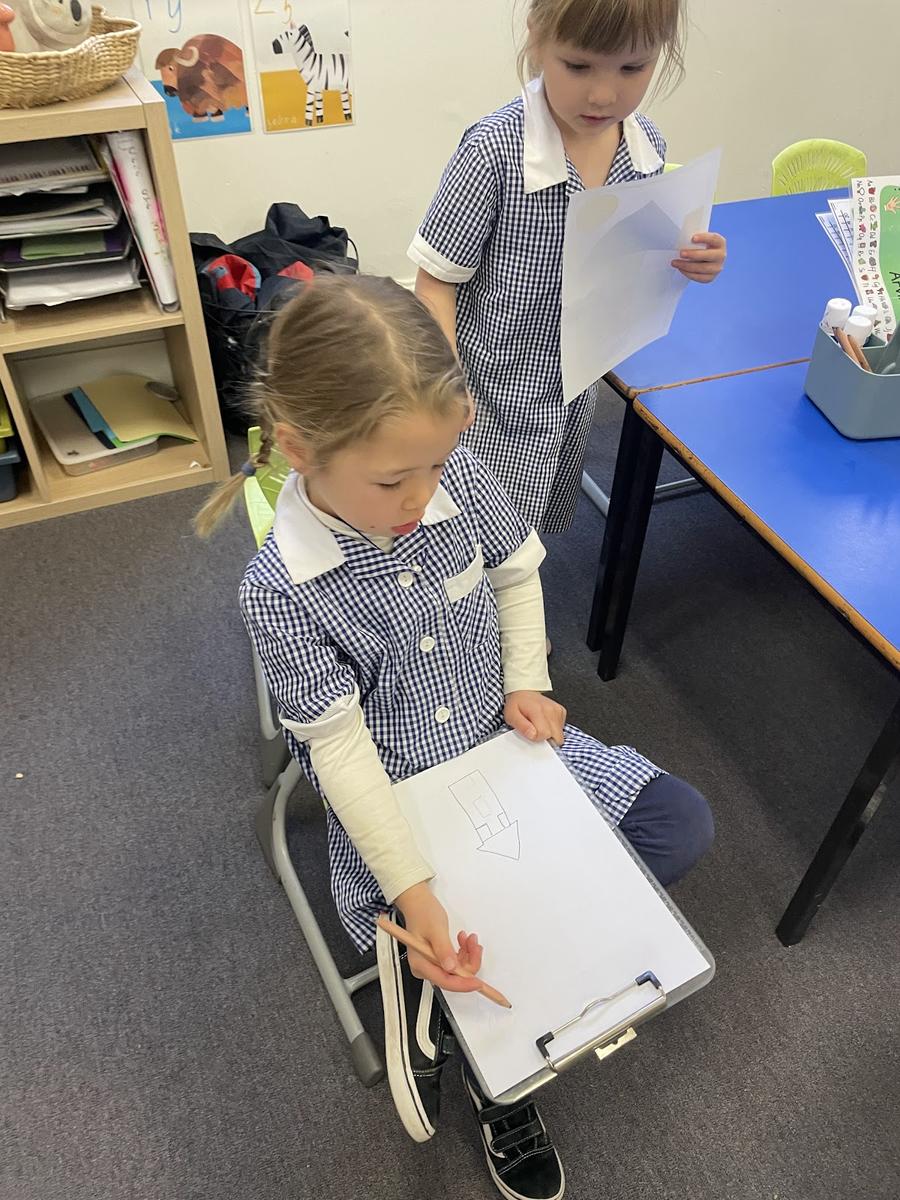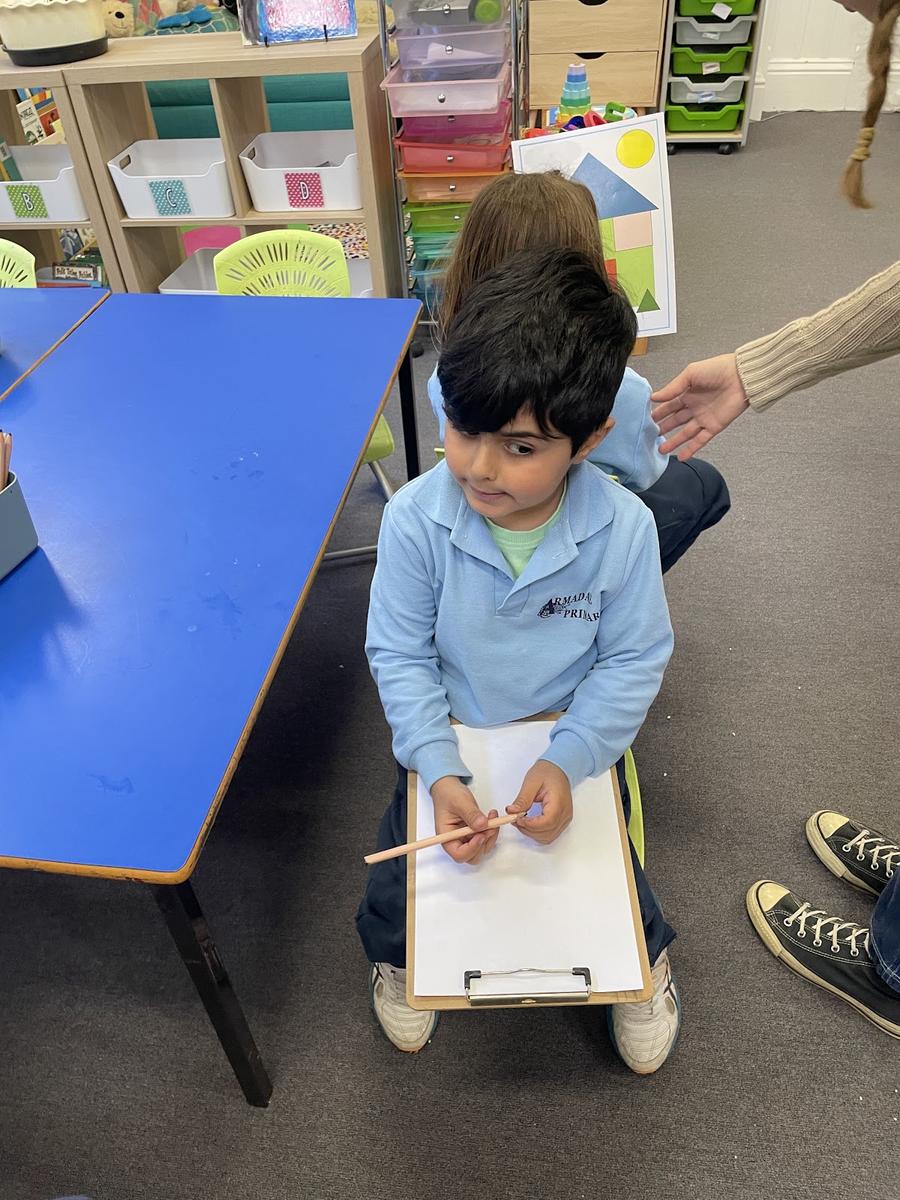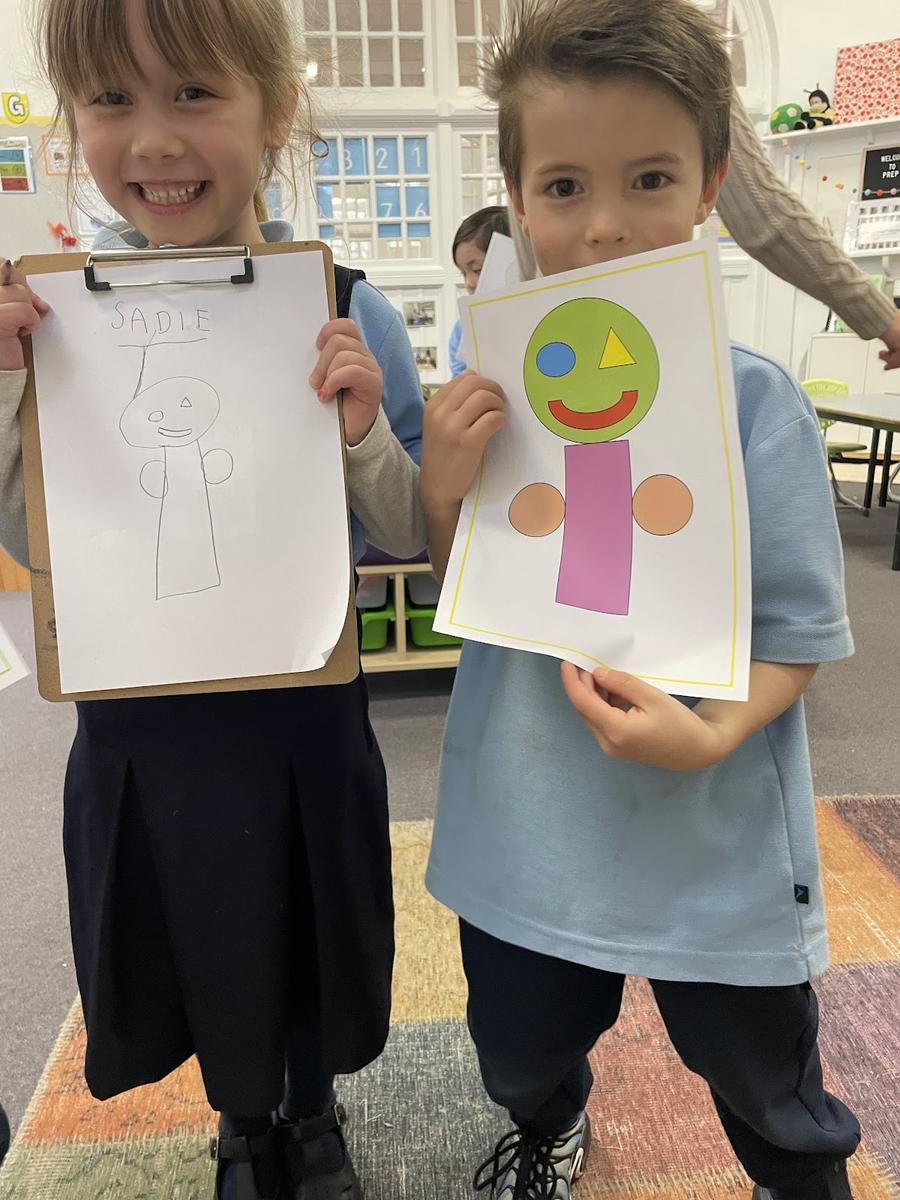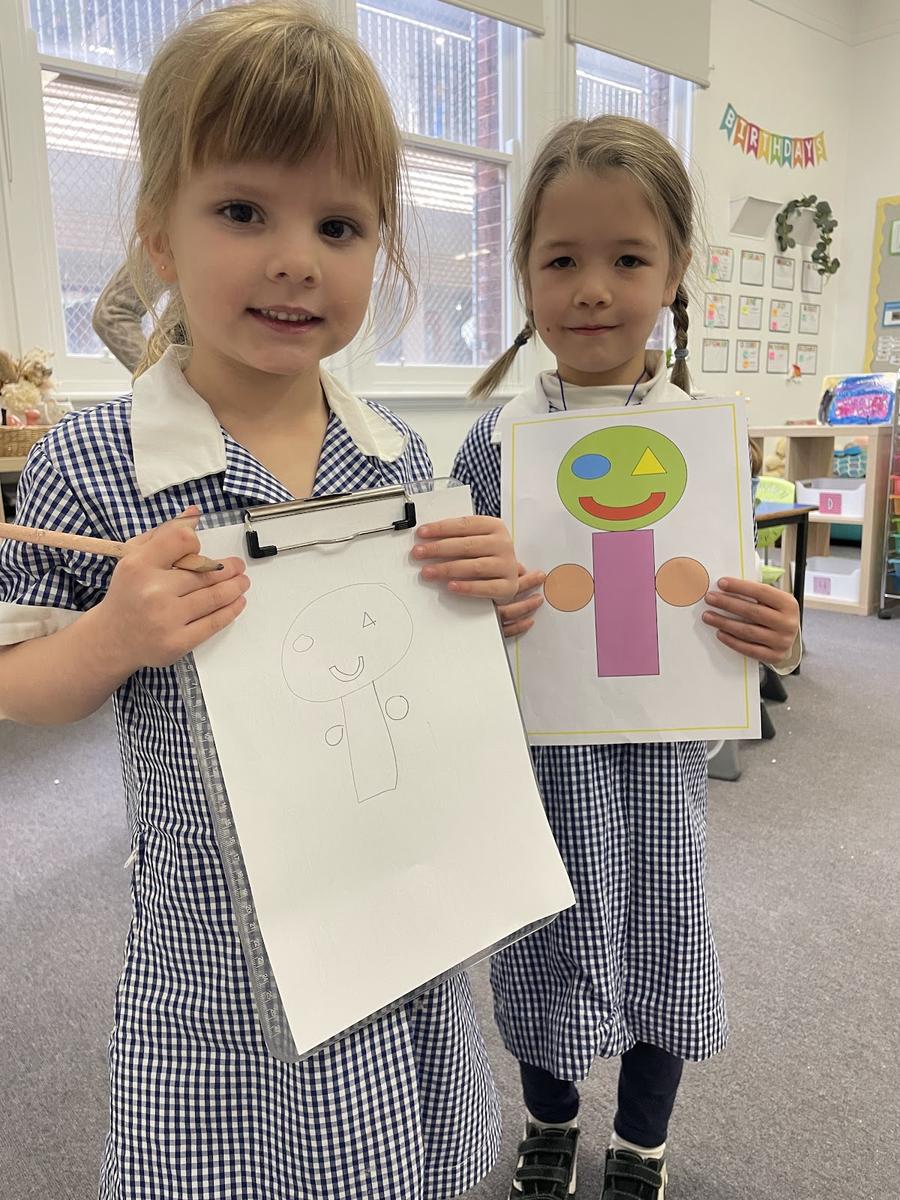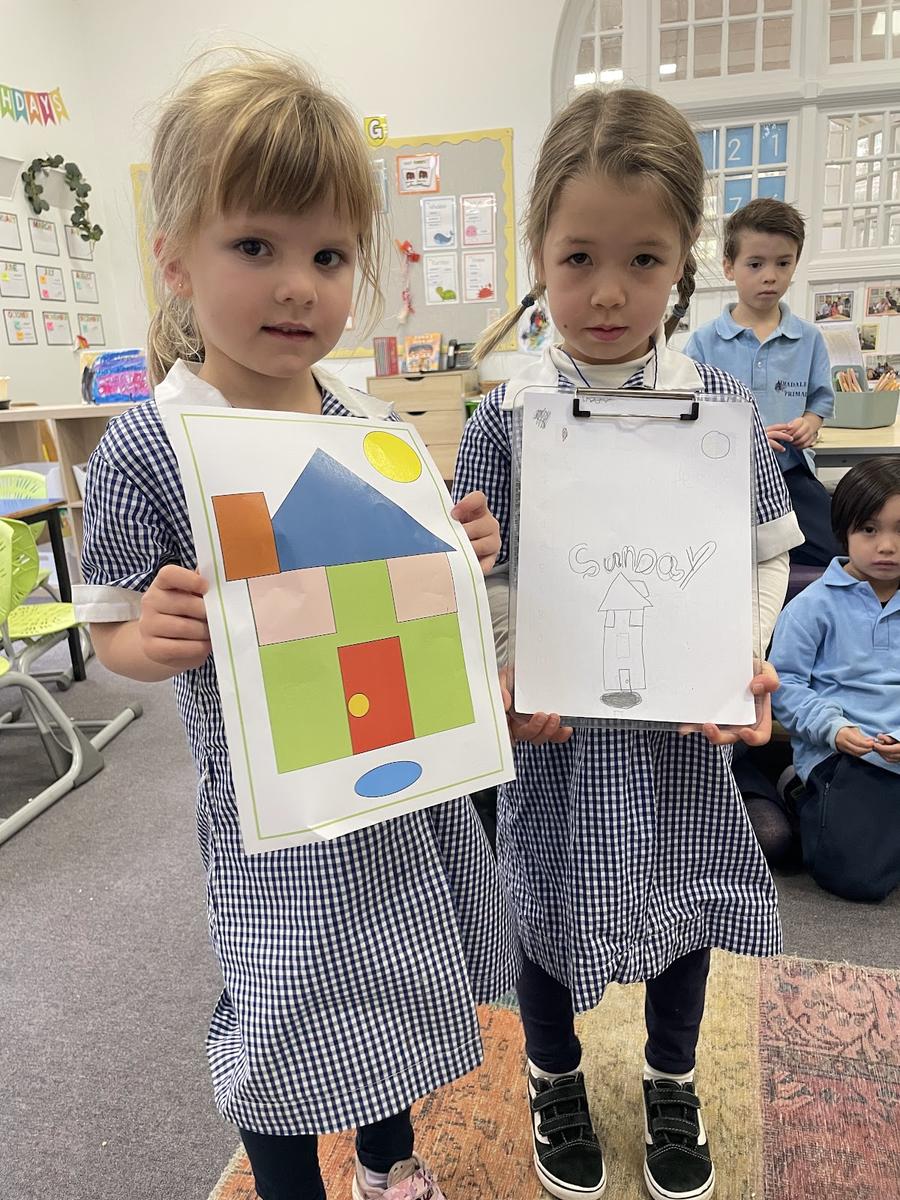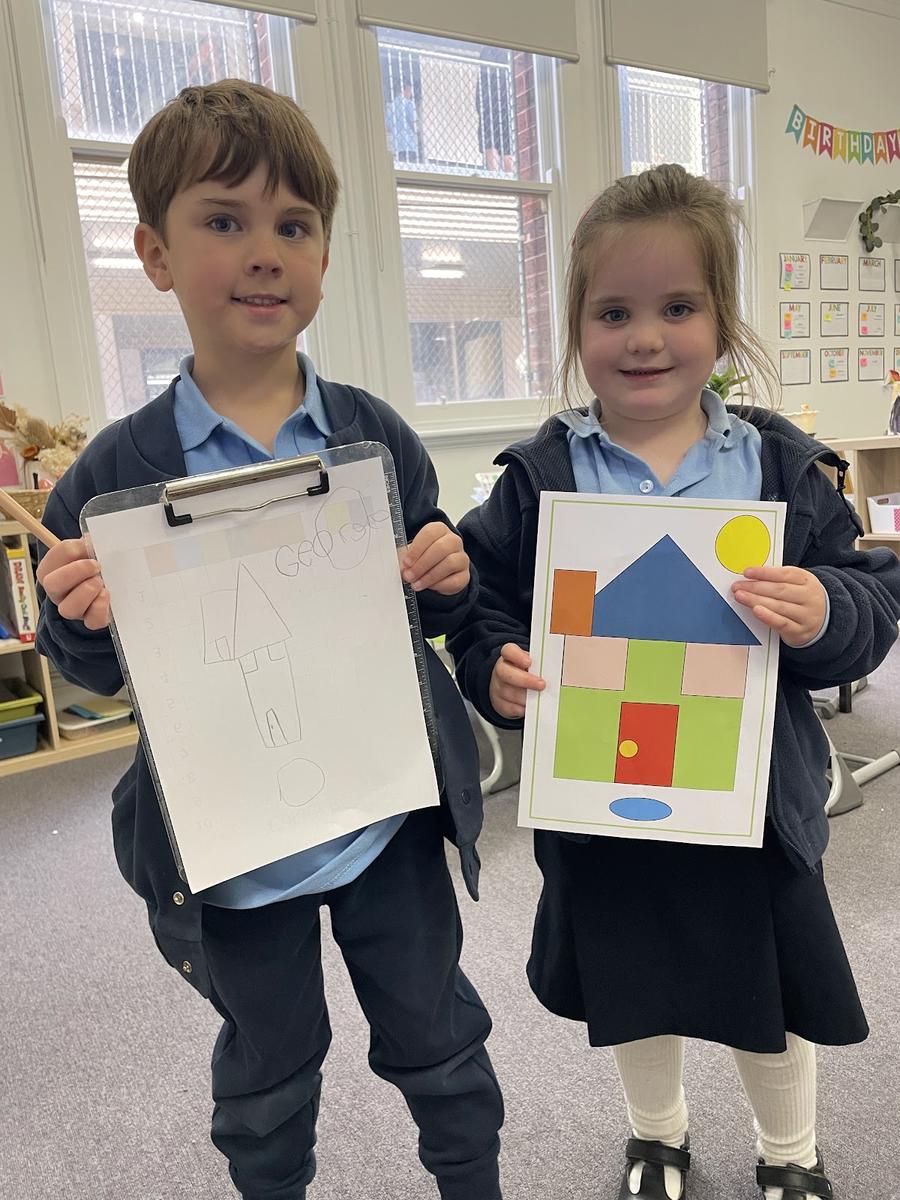Prep Bulletin
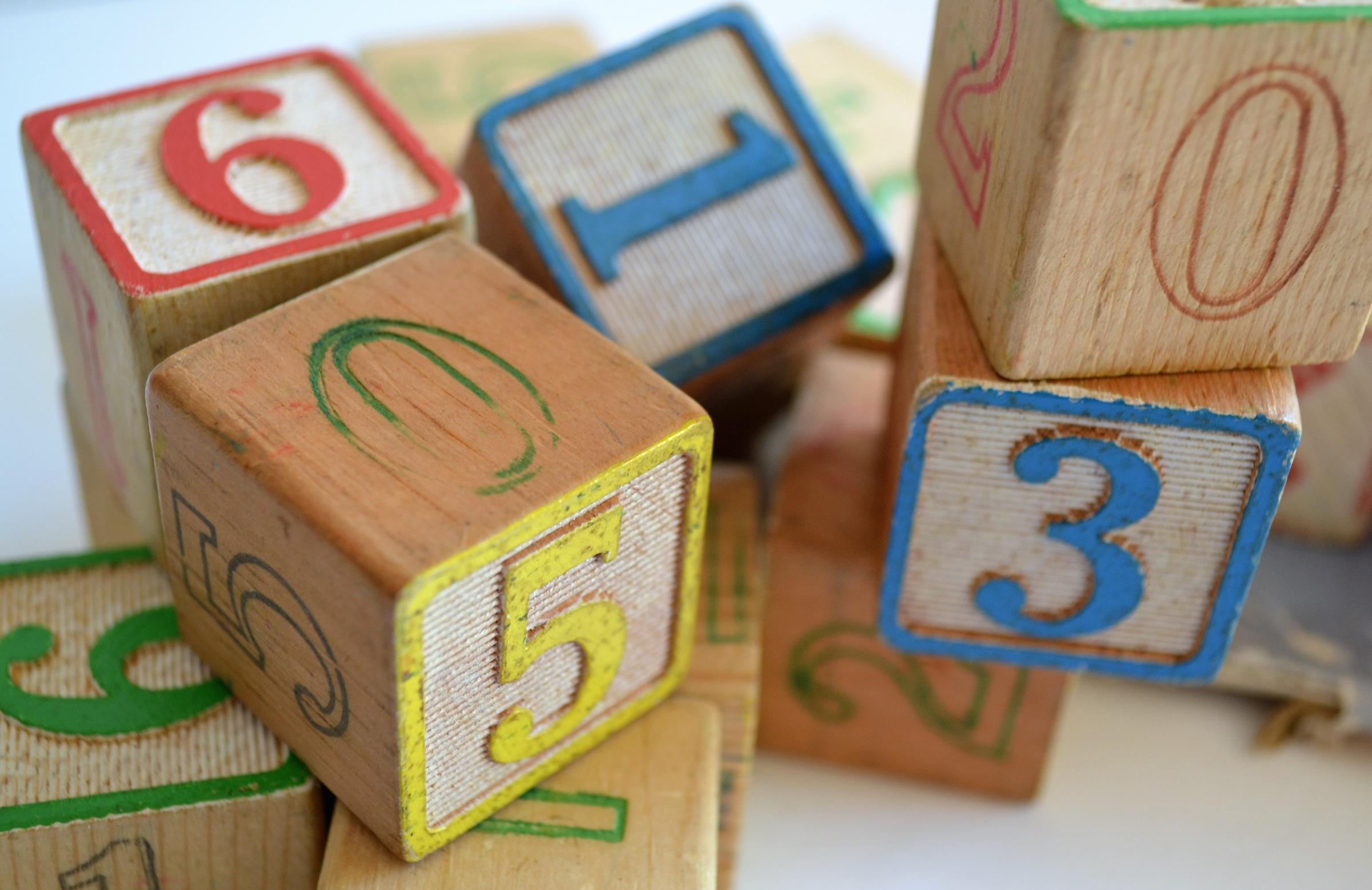
A snapshot into Maths
Learning intention: To use positional language to give clear and accurate instructions.
Learning experience overview:
Students explored positional language through a measurement and geometry lense. They developed their ability to describe where objects were placed using words like above, below, next to, in the middle, and under. These skills helped build strong spatial awareness and communication.
Fluency:
To build fluency, students played a version of Simon Says using location vocabulary. For example, “Simon says put your hands above your head” or “Simon says stand behind a chair.” This game supported quick thinking and reinforced vocabulary in a fun and active way.
Anchor chart
Whole: The teacher modelled the activity where they gave instructions for a student to draw a picture on the whiteboard. The class compared their picture to the actual one. Then the student swapped and gave the teacher instructions.
Small:
Students worked in pairs, sitting back to back.
- One student had a clipboard and blank paper.
- The other student had a picture. The student with the picture used positional language to describe it while the other drew. For example: “Draw a big circle in the middle of the page. Now draw a small square under the circle.”
- After finishing, students swapped roles so both had a turn at describing and drawing.
- Enabling Task: Students used a picture with fewer and simpler shapes.
- Extending Task: Students used a more detailed picture with more shapes, challenging them to give even clearer instructions.
Whole: At the end of the session, students shared their drawings and reflected on their experiences. They talked about the challenges they faced, the language they used, and why clear instructions matter.
In this learning experience, students are working towards:
- Understanding and using positional language
- Listening carefully to follow directions
- Giving clear instructions to a peer
- Building confidence in spatial awareness and communication
Examples of students work:
What you can do now to continue the learning at home from this experience:
- Play games like Simon Says or Treasure Hunt using positional language
- Ask your child to describe where things are at home using positional language For example: “Where is the remote?” → “It’s under the couch.”
- Encourage your child to give you directions to complete a simple drawing or building with blocks
Warm regards,
Alyssa, Ruby and Julian
Prep Team
Alyssa.Thermos@education.vic.gov.au

